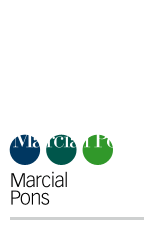Parallel trade in Europe
intellectual property, competition and regulatory Law
- ISBN: 9781841134376
- Editorial: Hart Publishing
- Fecha de la edición: 2007
- Lugar de la edición: Oxford. Reino Unido
- Encuadernación: Cartoné
- Medidas: 24 cm
- Nº Pág.: 402
- Idiomas: Inglés

Are parallel importers the key to unlocking the single European market, breaking down long-established national barriers for the benefit of all? Or do they instead just operate in a dubious "grey market", free-loading on the investment of innovators and brand owners to the ultimate detriment of future investment? Parallel importers are in turn lionised and demonised, both in legal commentary and in the mainstream press. As one might expect, the truth is likely to be somewhere in between these extremes. Trade is economically possible whenever the price of a particular product is higher in one area than in another. However, in the real world trade will only occur if this price differential is sufficient to cover the costs of the trader together with a sufficiently attractive margin of profit. Some costs can be viewed as "barriers" to trade which result in an economically imperfect allocation of resources across the world. They can also operate as a waste of resources. Various attempts have been made to reduce unnecessary barriers, encouraging trade and reducing waste (the clearest example being the WTO, which is dedicated to eliminating barriers to trade). Regional trading areas, such as the European Community (which is the prime concern of this book) share these goals, along with certain other aims. Although many barriers have already been removed, the process is far from complete. "Parallel trade" occurs when goods are manufactured by one party (the manufacturer) and put onto the market in country A but are then imported into country B by a second party (the parallel importer). The manufacturer may have manufactured the goods and/or put them on the market in country A directly or through third parties, but the distinguishing feature of parallel trade is that the manufacturer did not intend the goods to end up in country B. Parallel trade normally occurs when the manufacturer sells the goods in question in both countries (thus the trade is "parallel" to the main trad






